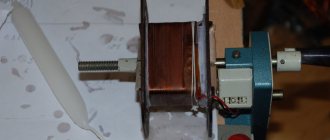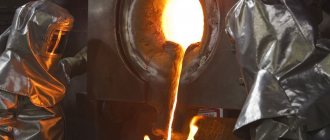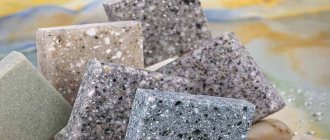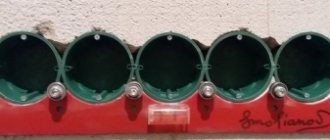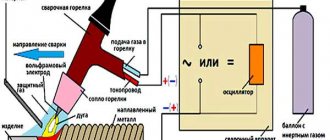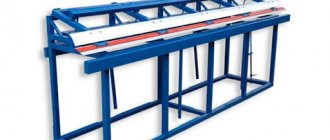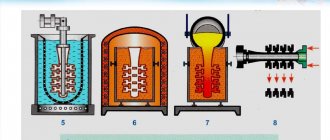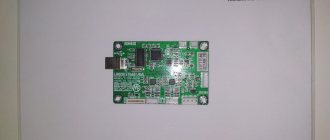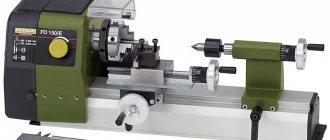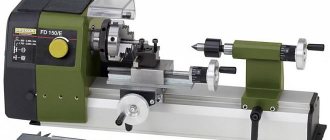Plastic products occupy one of the main roles in human life. This material is indispensable both in production and in everyday life. Manufacturing techniques are of interest to many people; plastic injection molding equipment is increasingly appearing in private homes. This material is the most profitable of many production options. It is used to make various products that are in demand in the household.
As for natural materials, which are very expensive and quite difficult to produce, plastic parts are replacing them over time. This happens because people do not think about the production methods for familiar and easy-to-use products.
Types of plastics and raw materials
The following types of plastics are used for the production of polymer products:
- polyethylene;
- polystyrene;
- polyethylene terephthalate;
- polyvinyl chloride;
- high and low pressure polyethylene;
- polypropylene;
The quality of plastic manufacturing is determined by the choice of raw materials. Even the best plastic injection molding equipment requires reconfiguration when the starting material manufacturer changes.
Otherwise, the quality of the products produced will be completely different.
Manufacturing method
Algorithm for selling any type of plastic products:
- formation of an unambiguous chemical composition;
- gas is introduced into the polymer environment;
- the resulting mass is given the desired casting;
- installation of the final form.
At the initial level, different components are mixed to obtain a plastic substance. After this, gas is added to the polymer in a specific way: either by introducing fast-boiling substances or by mechanical foaming.
They disappear when heated or introduced under gas pressure. The manufacturing method depends on the type of polymer and products. There are several ways to make plastic products:
- the presence of castings - the plastic mass is turned into liquid and poured into various forms similar to the finished product. As a result, quite a lot of items are formed: dishes, stationery;
- thermoforming;
- compression molding - during the manufacturing process, the required amount of material is placed in a mold, the halves are connected, and then a finished part is formed;
- encapsulation;
- vacuum forming - the required shapes are obtained from sheets of plastic under different pressures;
- layering molding;
- blowing - the heated mass is poured into the mold. The mold closes and fills with air. The polymer spreads over the entire inner surface in equal quantities;
- extrusion - the mass is softened and suppressed through a matrix, which forms the required shape;
- compression molding - the workpiece is compressed inside the mold, excess material exits through the cracks.
Machines and equipment for the production of plastic molds
In the Lobas production company, the production of machines for thermo-vacuum molding occupies a special place. They are created not only for their own needs, but also made according to customer orders. Anyone who independently decides to produce plastic molds becomes independent from a third-party mold manufacturer and makes three-dimensional plastic elements for different areas of production.
The vacuum forming equipment produced by Lobas is designed for molding ABS plastic, polycarbonate and PVC film. Machines are special installations where special 3D matrices (master models) are fixed on work tables, which are used to create plastic molds. You can buy a vacuum forming machine from the Lobas company at a low price.
At the enterprise you will be able to gain your first skills in working with thermo-vacuum equipment. Several different products can be molded in one production cycle. It depends on the size of the model. The average molding time depends on the thickness of the plastic and the configuration of the product:
- The work table of the vacuum forming machine is equipped with a clamping frame and clamps.
- Heating element - closed heating elements or heat lamps covered with a casing to achieve uniform temperature distribution over the entire area of the plastic sheet.
- A vacuum pump is installed at the bottom of the machine, which ensures quick molding of the plastic blank on the master models.
The Lobas company produces easy-to-use, reliable and inexpensive vacuum forming equipment. They are easy to learn by untrained workers and require minimal maintenance. Ease of operation increases work efficiency and obtains a large number of products:
- Special 3D matrices are attached to the desktop, which serve as a master model for its volumetric repetition in form.
- A plastic sheet is fixed on top of the master model.
- This sheet is heated to operating temperature so that it acquires the elasticity necessary for molding.
- This heated sheet is carefully pressed against the master models and a vacuum pump pumps out excess air from under the mold.
- The resulting form is cooled and removed from the workbench.
The result is a finished plastic mold of high quality. The customer of the machines is trained at the production facilities of the Lobas plant during the process when you buy vacuum forming equipment.
The Lobas company has a system of individual approach to the buyer. He can choose not just from the proposed equipment, but also create a complete set of the machine - select its hardware according to his requirements and financial capabilities. Today, the high quality and low cost of vacuum forming equipment from the Lobas plant have been noted, in addition to domestic ones, by foreign customers. Buyers from non-CIS countries are pleasantly surprised not by the quality indicators of reliability and ease of use, but also by the price of the vacuum forming machine.
Price-quality of vacuum forming equipment VFSK and VFSV
The Lobas production company has proven that with high quality it is possible to ensure that the cost of equipment remains low:
- The company is a direct manufacturer of machine tools and sells them according to customer orders - there is no need for price markups from various resellers.
- All production areas at the enterprise are regulated and operate with the required efficiency, without being unnecessarily costly.
- Consumables - metal for creating machines and hardware - are supplied directly from manufacturers at special prices, which also does not increase the price of the finished product.
- Vacuum forming equipment is sold using our own Internet resources without the participation of intermediary organizations that can set their own prices.
- Transport agreements have also been organized with those who deliver the products, and the buyer on the website can independently calculate the cost of delivery, and managers will suggest the optimal prices for transporting goods across Russia or to Kazakhstan.
A special feature of the Lobas enterprise is that bureaucratic procedures are minimized when registering purchased goods, which helps save the buyer’s money and time.
Development of machine tool manufacturing at Lobas’s own facilities
Independent production of equipment in the company became a separate production area. Today, the company’s facilities produce numerous machines for the production of concrete products using vibration casting technology:
- Concrete mixing equipment of various types and volumes: concrete mixers without blades with an optimal volume of 260 liters, planetary type mortar mixers with volumes from 100 to 500 liters and classic concrete mixers with different volumes, according to customer orders.
- The company produces several types of vibration platforms. Among them are vertical and horizontal vibration tables, vibrating pedestals of various load capacities.
- To clean bulk materials, vibrating sieves and drum-type separators with different-sized metal gratings are made.
- Efficient machines with high-performance heat blocks are manufactured for entrepreneurs.
The equipment can be ordered for an operating voltage of 380 volts, but at the request of customers, it can also be made for 220 volts. The reinforced designs of the machines are distinguished by the large thickness of the metal and the power of the electric motor.
All machine models are tested in real concrete production conditions. In order to adapt machines to work in difficult conditions, excessive loads are created. It is necessary to achieve results so that the equipment meets all the declared characteristics and high build quality.
In addition to reliability, Lobas has ensured that the machines are comfortable and easy to use. Buyers of equipment are trained to operate the purchased machines directly at the enterprise. Customer requirements are taken into account to strengthen or simplify the design of the purchased equipment.
You can order vacuum forming equipment on this website through the Cart button. You place an order by clicking, and after a while the company’s specialists will contact you to explain all the necessary issues without unnecessary bureaucratic procedures, taking into account all your wishes regarding price and quality.
Equipment for making plastic items
To produce plastic products you will need a ready-made production line or a separate machine. Any master can build it at home.
Extruders are a huge set of machines that facilitate the production of foam and window profiles, pipes and plastic slates, tubular and sheet films, and polymer sheets.
The main structure of the machine is the excuder. The extrusion line is made up of a set of additional mechanisms. The production operates in automatic mode, it is regulated by a specific program.
An injection molding machine is a machine for injection molding plastic. The pre-prepared mass is put into molds and cooled. As a result, a finished piece product is formed.
Automatic thermoplastic
About 75% of all plastic products are made on these machines. This technique promotes the formation of rather complex shapes that fit the required dimensions with precision. The equipment has the ability to work with all types of this material.
The unit includes a drive, a material preparation module, an automatic control unit and a mold closing and opening module. Injection molding equipment is quite expensive and includes many innovative solutions.
Plastic injection press
What technology allows
Using a plastic injection machine, you can quickly and inexpensively create a small series of parts of any complexity. The features of this method are:
- the ability to obtain exact copies of the master model that have stable sizes and shapes;
- carrying out tests before producing a series;
- obtaining plastic models that are suitable for the manufacture of a small series of metal parts;
- the ability to test structures for operability and assembly;
- finalization of product design;
- production of a batch of samples in a short time using casting and silicone molds.
Special equipment
Blow molding machines are designed for the production of hollow vessels that have thinner walls: barrels, canisters and bottles.
This unit helps to heat the material and blow mold it. This method is combined with injection molding in one injection blow molding machine. Extrusion blow molding machines combine the following techniques: extrusion and blow molding.
In this case, it is possible to produce a wider selection of products than blow molding machines. All processes are controlled by a microprocessor.
Machine classification:
- by the number of streams;
- by type of heads;
- by number of posts.
A tabletop manual press for plastic injection is designed for the production of medium-sized products in small batches. This machine weighs no more than 15 kg. Fits perfectly on the table.
If you purchase it in a store, then in some cases the table itself is included in the kit. A tabletop plastic injection molding machine is needed to produce parts of new designs as an experiment.
Tabletop plastic injection machine
Where should you start?
The first thing you need to do before organizing production is to choose which groups of goods you will produce.
A lot depends on your specific capabilities. For example, if it is possible to agree on the supply of containers for packaging semi-finished products, you should start with it. This will give a good start to the production process. Later, if necessary, it will be possible to expand and engage in the production of other product groups. If there are no developments, then you should start with consumer products:
- buckets;
- flower pots;
- containers for seedlings;
- packaging.
Plastic molding at home
Before starting the process, it is necessary to prepare the area. A table is perfect for equipment such as a mini injection molding machine. This unit weighs about 50 kg. Such a machine will require 20% of the maximum electricity for 10 hours of operation.
For example, if the power is 1.7 kW, then in 10 hours 3.4 kW will be required. The machine is designed to work for one person. In the process of molding plastic products, it is necessary to comply with all safety and sanitation standards of the industry.
It takes 40 seconds to produce one product, which means that specialists can produce about 100 parts in an hour.
In addition, you will also need additional equipment - a crusher.
Plastic crusher
A mini plastic injection machine injects the mass directly into the part. If you completely follow the instructions and follow all the rules of casting, there is practically no defect.
Often craftsmen begin home production by using thermoplastics - the material is not easy and requires a scrupulous attitude. Casting from this material involves the use of several preparatory stages:
- tremoplast must be cleaned from the upper layers of contamination;
- It is necessary to start melting at low temperatures, increasing the degrees by an equal amount;
- To cool the mold, it is necessary to apply a sharp temperature difference.
It is difficult to work with such material, so it is better to hire an assistant at home. This solution will help to carry out all operations on the machine evenly, as well as to cool the product in a timely manner without breaking the standard shape.
Homemade plastic molding
Do-it-yourself home plastic molding is a type of industrial version of the manufacture of plastic products. It allows you to produce any not very large products. For example, such as:
- various caps and lids;
- housings;
- toys;
- cubes;
- dishes;
- souvenirs.
Equipment for small-scale casting
Small-scale casting does not require the purchase of expensive equipment. For a small workshop it will be enough to purchase the following:
- Tabletop manual machine for plastic injection.
- Form-forming part of the mold.
- Silicone for molds.
- Two-component plastic.
A tabletop casting machine is a type of foundry equipment used for small-scale production. He can carry out his work using both single and multi-place forms. To install such a machine, an ordinary desktop of a small area is quite enough, the main thing is that it is stable.
Currently, there are modifications of machines with electromechanical drives. They are more reliable and easier to maintain. Some of the advanced models of such units are even equipped with an automatic clamping unit. A manual casting machine allows you to produce an average of 10 to 15 products per hour.
Making your own silicone molds
You can make molds for plastic injection at home yourself. To do this, you will first have to prepare a sample model. Its production can be ordered from the owner of the 3D printer.
Next we proceed as follows:
- Using a wide brush, carefully coat the sample with a thin layer of silicone.
- We place it in a pre-prepared formwork.
- We fill the entire volume of the formwork with silicone.
- We wait 7-8 hours until the silicone completely hardens.
- We make a cut shape.
Your first mold is ready, now you can start hand casting.
Main types of silicones for making molds
There are quite a lot of silicones for making molds, the most common of them are discussed below:
- Mold Star 15,16,30. This series of silicones hardens well at room temperature. Can be used to produce molds with very good detail. Chemically sensitive to latex and sulfur. The number in the classification means the hardness indicator. They have a two-component base, which is mixed immediately before pouring.
- Rebound 25, 40. Used to create shapes using the “spread” method. Silicone is simply applied to the sample with a brush. Can be used in combination with various plasticizers and modifiers. They are two-component formulations.
- Sorta Clear 18, 37, 40. Translucent silicones, well suited for creating cut shapes. They can also be used together with various additives and hardening accelerators.
Main characteristics of two-component plastics
Liquid two-component plastics are quite widely used in small-scale casting. There are quite a few brands of such polymers. Their main difference is the density and hardness of the finished product. Also, depending on the additives, they can have different texture and color. After mixing the components that make up the polymer, an accelerated process of hardening or polymerization begins, which usually lasts no more than 10 minutes.
The use of liquid plastics makes it possible to implement a variety of design solutions. Also, such polymers are very often used to create prototypes and models during design development.
Products made from liquid plastic are in no way inferior to industrially produced analogues. They are just as strong, beautiful and durable. In addition, the market for liquid polymers is constantly expanding and improving, which makes it possible to purchase more and more advanced samples.
Interesting articles:
Which machine to choose for vacuum molding of plastic?
What equipment to buy for plastic welding?
Business for processing polyethylene waste into granules.
Silicone molding technology
For silicone molds, you will also need to purchase a special liquid plastic for casting. It does not require preheating and hardens perfectly at room temperature. Molding plastic into silicone molds looks like this:
- The casting mold is thoroughly cleaned of dust and other contaminants.
- Both halves of the form are firmly secured using rubber bands, tape or any other available materials.
- Two-component plastic for casting is diluted in a container. Both of its components should be mixed very thoroughly. In this case, you need to act as quickly as possible. After just a few minutes, the plastic begins to set. At this stage, dye is added to the composition to give a certain color.
- The thoroughly mixed mixture is poured into the mold in a thin stream. It must even fill the casting channel. After the degassing process, the volume of the material will decrease slightly.
- Wait for the product to cure. Usually this takes no more than 10-15 minutes.
Injection plastic allows you to create a small amount of original designer products with your own hands.
Manual casting technology
Casting methods using a manual machine are somewhat similar to industrial ones. The process itself looks like this:
- Installation of injection molding nozzle on the machine.
- Applying a layer of silicone to the surface of the mold.
- Installing the mold on the unit.
- Loading raw materials into the bunker.
- Stirring and heating polymers using a screw.
- Casting.
- Cooling.
- Disassembling the mold and removing the finished product.
The tabletop injection molding press is ideal for small production environments. It is highly versatile. He can cast products from almost any type of polymer. To increase productivity, a plastic injection press should be equipped with several similar molds at once. This allows for a virtually uninterrupted production process.
Additionally, finished products can be fastened together using a special welding extruder. This allows us to significantly expand the injection molding business by producing more complex products.
